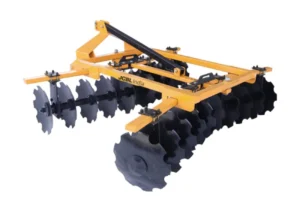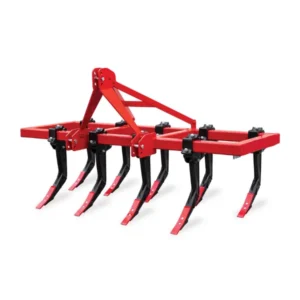In modern agriculture, the importance of proper soil preparation cannot be overstated. Cultivators play a pivotal role in this process, helping farmers in achieving optimal crop growth and yield. Understanding the various types of cultivators available can greatly enhance farming efficiency and productivity. Fortunately, this blog reveals the world of cultivators, exploring their types, uses, and how to choose the right one for your farming needs.
According to Maximize Market Research latest report the global cultivator and tiller machinery market will grow and was valued at US$ 1.97Bn in 2022 and is estimated to become US$ 3.22 Bn by 2029 at a CAGR of 7.25% during a forecast period.
‘Verified Market Reports’ latest report shows that the global Cultivator Market size is expected to develop revenue and exponential market growth at a remarkable CAGR during the forecast period from 2023–2030.

Source: Verified Market Reports
What Is a Cultivator?
A cultivator is a farm implement designed to till the soil, preparing it for planting by loosening and aerating the earth. It is typically mounted on a tractor and features teeth or shanks designed to break up the soil and pull away undesired plants.
Cultivators can be powered by engines or handled manually, depending on the size and breadth of the farming operation. They come in various forms, each serving specific functions in soil preparation.
The need for agricultural machinery is rising as a result of the need for better farming methods, especially in developing countries. As a result of the growing demand for this agricultural machinery, manufacturers have had to introduce new cultivators.
Harrows Are Cultivators?
Harrows and cultivators may appear to perform the same tasks at first glance, but the two have a few minor differences. Not all cultivators are harrows, but all harrows are cultivators.
A mechanical implement used to break up the ground and pull weeds is called a cultivator.
A harrow is a cultivating tool set that breaks up and smooths soil with its spikes, teeth, or disks.
What Are Cultivators Used For
Cultivators are versatile tools with a range of applications in agriculture, including:
- Breaking up soil clods
- Removing weeds
- Aerating the soil
- Creating seedbeds for planting
- Adding organic materials or fertilizers into the soil
5 Types Of Cultivators
Disc Harrow

Disc Harrow farming implement is designed with a series of metal discs to remove undesired weeds and prepare the soil for sowing.
You can use it both before and after plowing to ensure your soil is in the most favorable condition. A disc harrow’s robust and balanced design allows it to reach up to 8 inches deep into the ground. This makes it a beneficial tool for getting your soil ready and managing weed growth so that you may get the most possible harvest.
Disc Harrows come in three primary varieties: Offset Discs, Tandem Discs, and Speed Discs are the most commonly used.
Chain Harrow

A chain harrow is a farming tool that is typically used as a finishing tool to preparing a seedbed for planting. Chain harrows consist of a series of metal chains or heavy-duty cables attached to a frame. They are dragged behind a tractor, with the chains or cables working to break up clods, level the soil, and remove weeds.
These harrows frequently have curved or angled tines to maximize soil penetration and reduce soil buildup on the harrow.
Chain harrows are versatile and can be used for both primary and secondary tillage tasks.
Spring Tine Cultivator

This cultivator is made out of a frame with closely spaced, curved tines or teeth that are used to drag across the soil. These tines are Generally made of strong, durable spring steel, these tines are designed to move independently as they pass over the ground. This feature is essential for reducing soil compaction and crop damage risk.
Spring tine cultivators are versatile tools that work well in a range of various soil types and conditions, from light to heavy.
Spring tine cultivators are often used along with other tillage tools by farmers to provide a well-prepared seedbed for planting crops
Rotary Tiller

A rotary tiller, or rotavator, is a cultivator equipped with rotating tines or blades mounted on a horizontal shaft. The blades spin and till the soil when the tractor’s power take-off (PTO) drives the shaft or drum. As the tiller is pulled or driven forward, the rotating tines break up the soil, mixing in organic matter and creating a finely textured seedbed.
Rotary tillers come in different sizes and configurations, ranging from heavy-duty units for commercial agriculture to small handheld models for small farms.
Also Read: Types of Tillage Implements in Agriculture!
Chisel Ploughs (Rigid Tine Cultivators)

Chisel ploughs, also known as rigid tine cultivators, feature multiple shanks or tines arranged in a row. These shanks penetrate the soil to varying depths, breaking up compacted layers and aerating the earth. Chisel ploughs are commonly used for deep tillage operations and are effective for soil loosening and subsoiling.
A spring protection system is utilized for safety features on many chisel plows and harrows. It is usually made up of a spring or a set of springs, it allows the tines or shanks to bend or move independently when it comes into contact with objects like rocks or soil stumps.
This function reduces the possibility of harm coming to the equipment and prevents damage to the operator.
How to Choose the Right Cultivator for Farming
When selecting a cultivator for your farming operation, consider the following factors:
- Soil type and condition
- Farm size and layout
- Tillage depth and intensity
- Crop rotation and planting practices
- Equipment compatibility and availability
Take Away
In conclusion, farms use a variety of cultivators to meet various requirements related to soil preparation. Understanding the differences between different types of cultivators, such as rotary tillers, rigid tine cultivators, and spring tine cultivators, is crucial.
With this information, farmers can choose the best cultivator for their specific application, boosting crop yields, improving soil quality, and increasing overall farm production.

